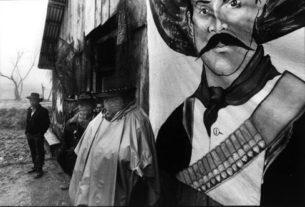Luis Dumois’ article about Volcán Paricutín released a few vivid memories of my teenage years in Mexico. In 1948 I was incredibly lucky to visit the volcano of Paricutín in its full and frightening glory. Fountains of luminous, red lava tossed high in the air, crashing and spilling down the sides of Paricutín’s steadily growing cone. Thundering eruptions shook the ground for miles around with earthquake-like tremors that could be felt even while siting on horseback.
I was lucky to be there in 1948, which I believe was the prime year for volcano-watching. The memories of our horseback adventures, moving as close to the caldera as we dared, will never fade. Lava rocks along the path were still smoking and steaming with heat. Our horses wore burlap-and-rawhide mittens to protect their hooves. Smoke and volcanic dust created a haze that colored the sun fantastic shades of red, violet, and orange. The panorama made Biblical stories of inferno and hell almost believable. Black, charred pines and gnarled oaks silhouetted against flaming sunsets and glowing lava flows can never be forgotten .
Yet, none of this deterred my two kid brothers (Evan and Owen) from dismounting and scrambling over the lava flow toward the San Juan Parangaricutiro church. Its roof and ancient bell tower barely projected above the lava flow. My brothers peered down into the opening and saw that the interior of the church was almost intact. They also discovered ropes descending to the chapel floor below. To my parents’ horror the two little rascals disappeared into the depths of the church.
My dad had to climb down from his horse, stumble his way across the lava, and shout threats to force my brothers back up to the surface. Then we continued our way toward a much more dangerous adventure: the exploding caldera of Paricutín! By the way, Urapan in those days was the epitome of small town Mexico. There were but three hotels, the largest had about 20 rooms. More burros plodded the streets than delivery vans. It was quiet, quiet, peaceful! (Not today!) When I think of “Old Mexico,” I think of Urapan, Michoacán!
But that’s not why I started to write this article. Reading about those days reminded me of a story I’d almost forgotten. I encourage anyone browsing this page who remembers similar incidents to get in touch with me.
You see, in those days, my father was one of those most hated of all foreigners in Mexico. He was a matavaca. Dad was a cow-killer!
They were seriously hated! At least seven of my father’s colleagues were murdered by peasants trying to protect their cattle. With the encouragement of village priests, with the approval of their neighbors, and with the assistance of razor-sharp machetes, the rancheros hacked their tormentors into small pieces.
Let me explain, and with the caveat that what I write here is from my recollections as a teenager, from conversations with my father, from incidents related to me by people involved, from articles written on the subject, and from a small number of people still alive who were remember the AFTOSA project. I encourage anyone who can add to this story to contact me. (jhowells@pacbell.net)
It all started like this: In the 1940s, a serious outbreak of bovine hoof-and-mouth disease in Mexico threatened to cross into the United States and to severely damage our cattle industry. The U.S. Department of Agriculture embarked on a joint effort with Mexico to eradicate the disease. The program was known as AFTOSA. (I must admit, I still don’t know if aftosa is the Mexican name for the disease or an acroymn for the disease.) Our family was overjoyed when my father, a veterinarian, was accepted into the program. We settled in Mexico City, in Colonia Napoles, but dad was stationed hither and yon to fight hoof-and-mouth disease.
Because a vaccine against the disease was still months away from production, the USDA decided upon a holding action. Stop the spread of the disease by eliminating cattle (healthy or diseased) in a sort of “fire-break” action. With typical gringo misunderstanding of other cultures and peasant values, U.S. bureaucrats logically assumed that farmers would be delighted if we simply replaced their hard-working, non-complaining oxen with healthy (but stubborn), good ol’ U.S. mules. They didn’t realize that remote campesino households felt that their ox was practically a member of the family. They ignored the fact that U.S. mules are famous for pulling plows only when fires are built under their bellies, to get them moving. They assumed that money would compensate for a family’s loss of a precious cattle herd.
Added to the foregoing complications: At that time Mexico’s Catholic Church was recovering from a period of intense government repression and persecution. The clergy who survived were understandably paranoid. Also, many priests were Spanish Civil War refugees, suspicious of everything connected with government. All were against a foreign government interfering in their domain, even worse, gringo government! For whatever reason, the priests in some villages encouraged the people to resist the matavacas. Even after the vaccine was developed, the priests still harangued against the gringo veterinarians, encouraging the people to resist.
After losing seven U.S. veterinarians and more than 20 soldiers (including a colonel who was stabbed in the public square by a woman pretending to welcome him to the village) the Mexican government tried a different strategy. And it seemed to work.
My father explained it this way: “When we arrived at a village — by jeeps if possible, otherwise on horseback — we were always accompanied by a dozen or more soldiers. The first stop, the priest’s house. Armed with Thompson submachine guns, two of soldiers would arrest the priest and lead him to the village square. In the meantime, the other troops captured ten men at random, and herded them into the square. The prisoners stood in a row, while the priest was forced to stand on a high wooden box. A hangman’s noose would be looped around the priest’s neck, the rope tightened over a tree limb.
“By this time, as you can imagine, the entire village gathered about the scene. At that point the commanding officer, usually a colonel, stood near the quivering priest to address the gathering. He would say:
“These men are animal doctors. They are here to give medicine to your cows. Medicine that will prevent your cows from becoming sick. No matter what your priest says, they are not going to kill your cows. Therefore, you are strictly prohibited from harming these doctors. In any way!”
“Then the colonel pointed first at the priest, and then to the ten frightened hostages, lined up firing-squad fashion. ‘If even one of these doctors is harmed, if even one of my soldiers is harmed, this village will pay. The box will be removed from the priest’s feet. These ten men will be shot.’
My father was dismayed at the Mexican army’s callous, arrogant, and cruel treatment of the villagers. He also felt embarrassed when working in the field with campesinos, trying to convince them that their beloved cows and oxen weren’t going to die because of a needle syringe. But he and his colleagues also knew they would be safe.
There were no more killings.


